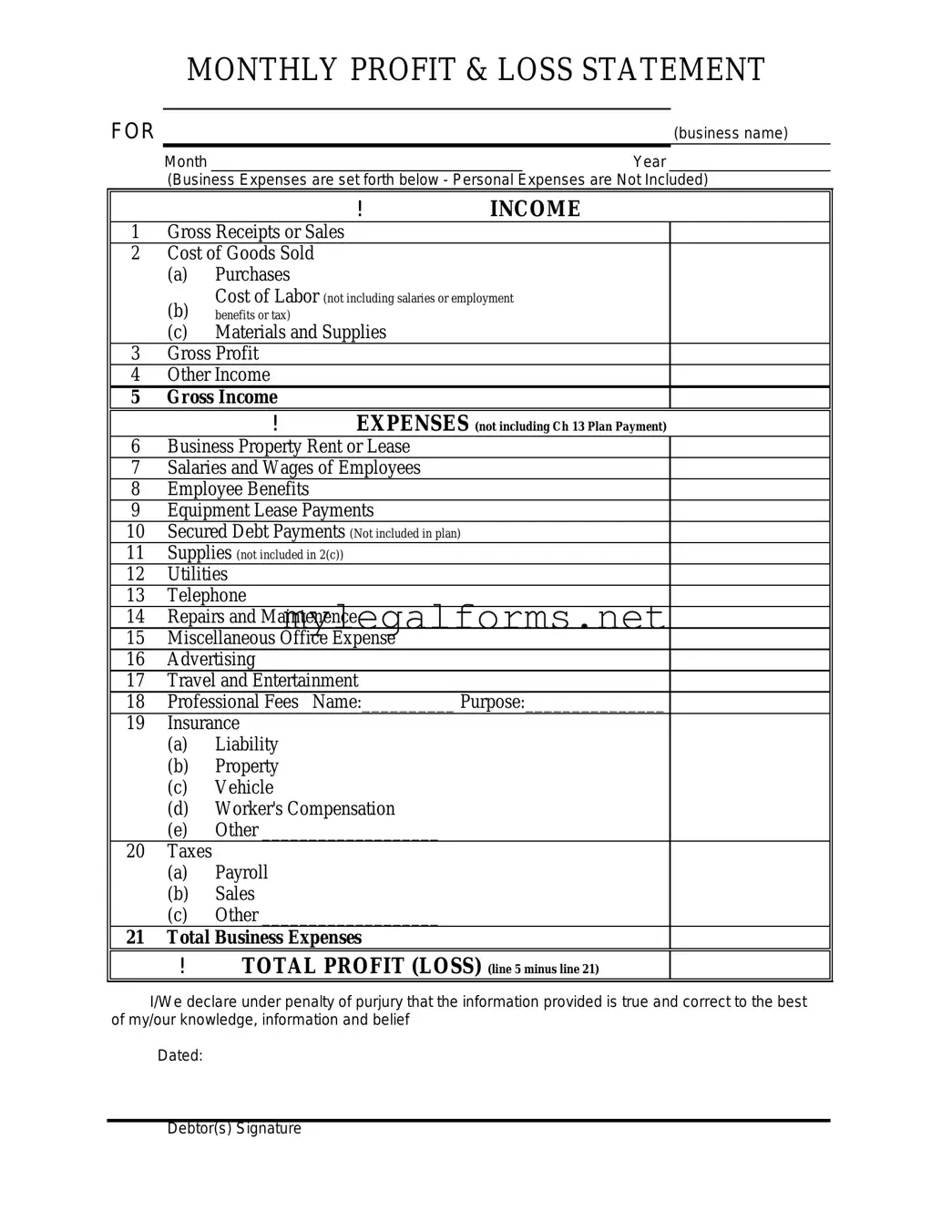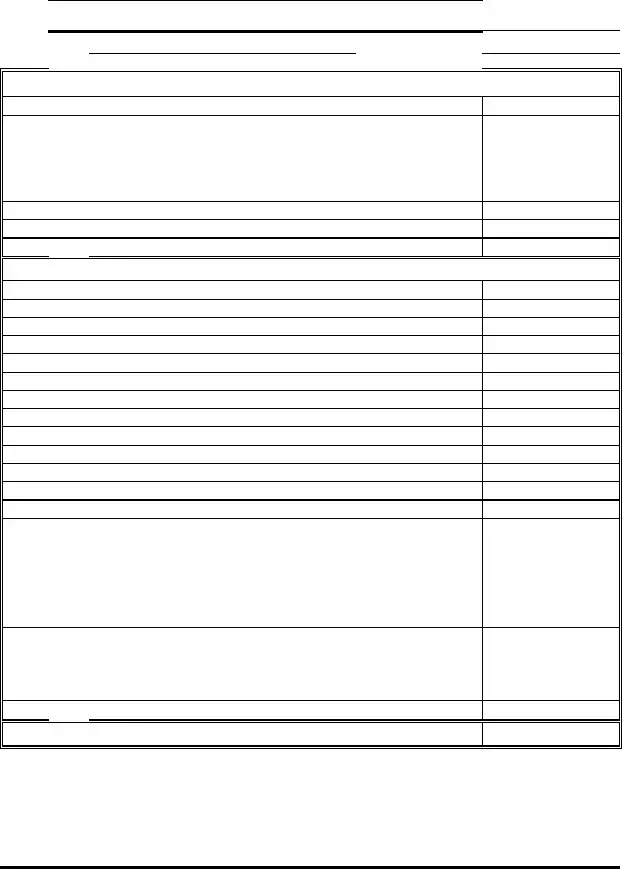The Profit and Loss form, often referred to as the P&L statement, serves as a vital financial document for businesses of all sizes. It provides a clear snapshot of a company's revenues, costs, and expenses over a specific period, typically a month, quarter, or year. This form is essential for assessing the financial health of a business, as it helps owners and stakeholders understand how much money is being made versus how much is being spent. Key components of the Profit and Loss form include total revenue, which captures all income generated from sales, and the cost of goods sold, reflecting the direct costs associated with producing those goods or services. Additionally, operating expenses, such as rent, utilities, and salaries, are detailed to show how they impact overall profitability. The document culminates in the net profit or loss, offering a definitive figure that indicates whether the business is thriving or struggling. By analyzing this form, business owners can make informed decisions, set financial goals, and strategize for future growth.

